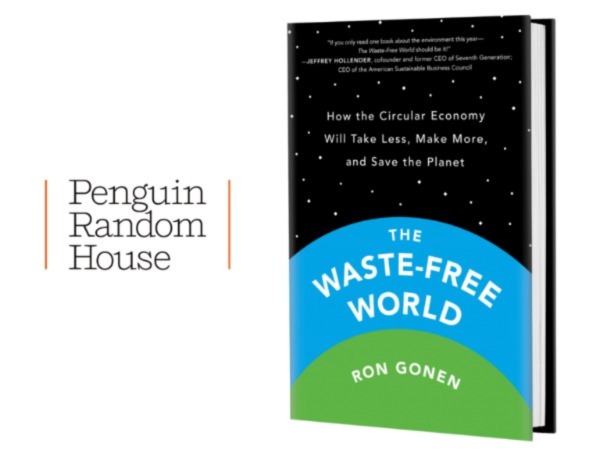
In The Waste-Free World: How the Circular Economy Will Take Less, Make More, and Save the Planet (Portfolio, 288 pages), author Ron Gonen asks consumers, businesses, and banks to embrace a circular economy.
A circular economy is a model of production and consumption that focuses on keeping resources in use for as long as possible by reducing consumption, reusing goods, and recycling materials.
Gonen begins by criticizing corporate giants that have encouraged consumers to embrace convenience and ignore the waste it produces. Next, he shows how the circular economy can work better from both a financial and environmental perspective. Whether it’s teaching us how cups can help restore forests or how our approach to farming can fight climate change, Gonen argues that a transition to circularity will benefit all of us.
Q & A with Ron Gonen
We recently asked Ron Gonen, the founder and CEO of the investment firm Closed Loop Partners, some questions about his work and his book.
What can regular people do to support circularity?
The most powerful way that we can accelerate the circular economy is through our purchases. We need to vote for circularity with our wallets, choosing to support circular businesses and business models that help advance the transition to the circular economy –– and the good news is that so many wonderful products and services are rapidly coming to market.
What has been the hardest part of convincing people about the circular economy?
One of the biggest challenges is that many advocates of the take-make-waste economy have canonized the flawed notion that ever-increasing consumption is the necessary engine of national economic growth and the source of individual well-being. Yet, there is nothing efficient about the fact that approximately 90% of plastic ends up piling up in landfills and oceans when so much of it could be recycled and kept in circulation. There is nothing efficient about the disposal of approximately 42 pounds of electronics goods — the fastest-growing part of the waste stream — per person in the U.S. annually, when so many of those items could be refurbished and resold. There is nothing efficient about 40% of food bought by Americans going to waste, a great deal of it dumped when it’s still good to eat.
What have you found to be the most effective way to convince people to change their behavior to support circularity?
The circular economy also has enormous economic benefits that can be realized by both consumers and companies. Reimagining our systems to keep valuable materials and resources in circulation –– instead of sending them as trash to landfills –– will save taxpayers billions of dollars. Additionally, the recycling industry in the United States alone generates $100 billion in economic activity, including 540,000 American jobs.
Accenture [a management consulting and technology services company] calculates that the transition to a circular economy around the globe between now and 2030 would lead to $4.5 trillion of economic growth, describing it as “the biggest opportunity to transform production and consumption since the First Industrial Revolution 250 years ago.”
In your book, The Waste-Free World, you tell stories about people you’ve met or look up to who have inspired you to pursue circularity. Whom would you say has been the most influential to you?
At 14, my high school water polo coach first introduced me to the concepts of a circular economy –– using materials and resources efficiently to reduce waste as much as possible. This served as the foundation of the work that I later pursued –– from founding my first company, RecycleBank, to working as Deputy Commissioner of Sanitation, Recycling, and Sustainability in New York City, and then to founding Closed Loop Partners in 2014. Closed Loop Partners is a circular economy-focused investment firm and innovation center working to advance a new economic model focused on a profitable, sustainable, and waste-free future.
What do you think is the biggest obstacle to circularity as a whole?
One of the most critical factors in advancing the circular economy is collaboration. To reimagine our production and manufacturing system into one without waste, all stakeholders need to be at the table. For competitors and peers to work together, a strong platform is needed to bring them together around shared goals –– one that can facilitate productive communication and partnership.
Is there anything else you’d like people to know about yourself, your book, or your company?
2021 was a milestone year for the circular economy. We continue to see a lot of progress as more innovators, companies, and investors advance solutions that help accelerate the transition to a circular system. “Smart” refillable packaging, robotics and artificial intelligence (AI) that optimize recycling and reuse, and technologies that turn food waste into gas for cooking are just a few examples of the innovations in existence today that are poised to grow. Multiple companies have already demonstrated the economic value created by aligning the interests of shareholders, employees, customers, and our environment.
For more on circularity, check out What exactly is a circular economy?
